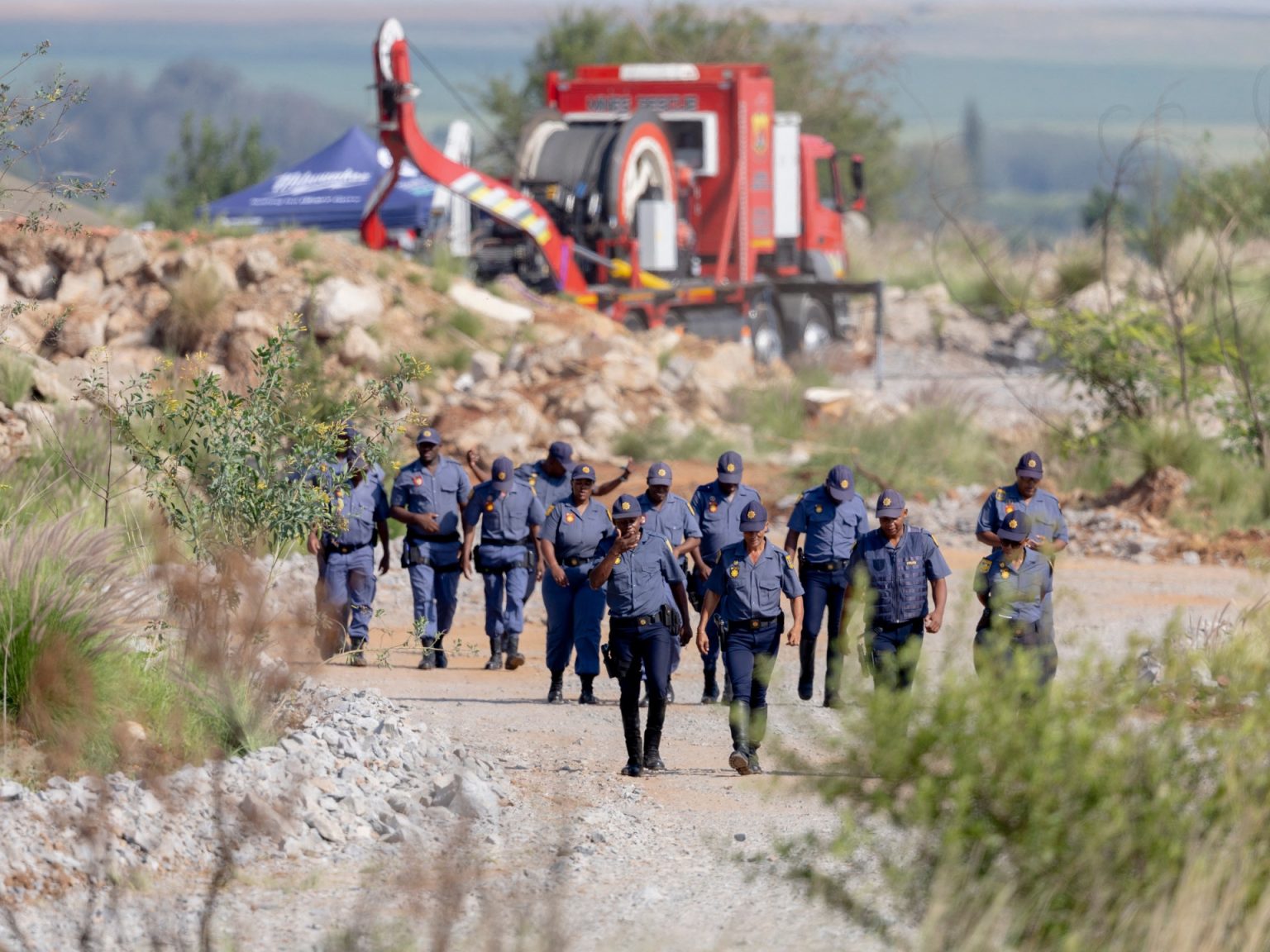The abandoned Buffelsfontein Gold Mine near Stilfontein, South Africa, has become the site of a desperate rescue operation after hundreds of illegal miners became trapped underground. Initial reports suggested at least 100 miners may have perished, with hundreds more still trapped, highlighting the perilous conditions of illegal mining in South Africa. A complex rescue operation is underway, involving a specially designed cage capable of reaching deep into the mine shaft, but the sheer number of trapped miners and the depth of the shaft pose significant challenges. The incident has brought the issue of illegal mining in South Africa, and its associated risks, into sharp focus.
The tragedy unfolded as police initially attempted to remove the miners and seal the mine two months prior. A standoff ensued, with police claiming the miners refused to exit for fear of arrest, while the Mining Affected Communities United in Action (MACUA) group countered that the miners were trapped after police removed their means of access and egress. This conflicting narrative underscores the tense relationship between law enforcement and illegal miners, while also highlighting the precariousness of their situation. With the mine shaft reaching a depth of 2 kilometers, escape without assistance was virtually impossible, leaving the miners vulnerable to starvation, dehydration, and other dangers.
The scale of the disaster became apparent when rescued miners brought to the surface a mobile phone containing videos depicting dozens of bodies wrapped in plastic, indicating a significant loss of life within the mine. Estimates of the death toll vary, with MACUA suggesting at least 100 fatalities, potentially from starvation or dehydration. The retrieval of numerous bodies, both by community members and official rescue teams, grimly confirmed the severity of the situation. The retrieval of bodies and survivors underscores the complicated and challenging nature of the rescue effort.
The rescue operation itself is a complex and time-sensitive undertaking. A specialized cage, designed to reach depths of up to 3 kilometers, is being utilized to bring survivors to the surface. The operation, estimated to potentially last up to 16 days, faces the daunting task of locating and extracting a large number of miners from a deep and hazardous environment. The involvement of a professional mine rescue company highlights the technical expertise required for such operations, but the scale of the disaster presents unprecedented challenges.
The incident has illuminated the pervasive issue of illegal mining in South Africa, a practice driven by poverty and unemployment. The closure of unprofitable mines by companies leaves behind a legacy of economic hardship for former mineworkers, often driving them to engage in risky illegal mining activities to survive. These “zama zamas,” as they are known, operate in dangerous conditions, often for extended periods, with limited resources and under constant threat of arrest. Their plight highlights the social and economic factors contributing to the persistence of illegal mining.
MACUA advocates for the trapped miners, emphasizing their desperation and the systemic issues that contribute to illegal mining. They argue that these individuals are not criminals but rather victims of circumstance, driven to extreme measures by poverty and lack of opportunity. The court order obtained by MACUA, compelling authorities to provide essential supplies to the trapped miners, demonstrates the organization’s commitment to their welfare. The tragedy at Buffelsfontein Gold Mine serves as a stark reminder of the human cost of illegal mining and the urgent need for sustainable solutions to address the root causes of this complex issue. The incident calls for a more nuanced understanding of the circumstances that drive individuals to risk their lives underground and emphasizes the importance of supporting those affected by mine closures.

